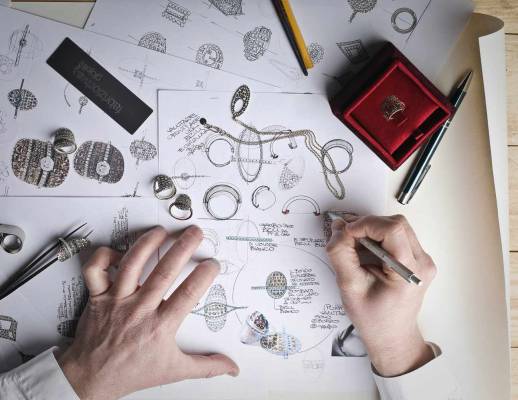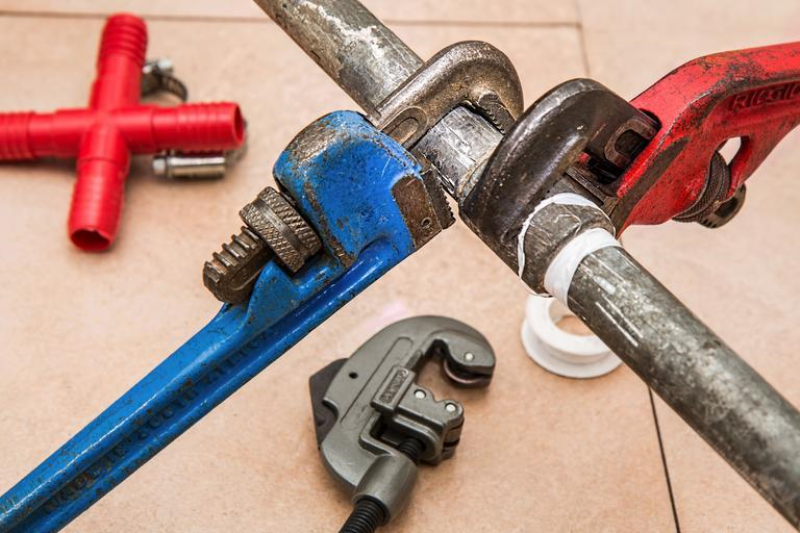Pursuing a jewelry design career can unleash your inner artist and show the world your unique creations. You can work for yourself or reputable jewelers all over the world.
You can work with the most beautiful precious and semiprecious beads, findings, and other beautiful materials if you feel inclined to do so.
You can get trained on the job or go to school; the choice is yours. But, if you're an ambitious self-starter looking for an outlet for your unique style, this is the job for you.
Deciding on the First Steps
Decide how you want to reach your goal of becoming a jeweler. Getting the training you need to succeed as a professional jewelry designer is possible in various ways. One way to guide your decision-making is to consider potential areas of expertise. For example, decide whether you wish to design jewelry merely or to design and make it.
Studying fashion or jewelry design could be helpful if you're set on limiting yourself to design work alone.
Then, you'll need to hone your skills and familiarity with the various medals, jewels, and other jewelry-making components used to create finished products if you ever hope to realize your designs. First, consider enrolling in a recognized jewelry trade school.
Many successful jewelers offer apprenticeships and on-the-job training, so many aspiring jewelers choose to forego formal education.
Discovering the Fundamentals of Jewelry Design
Adjusting, resizing, and reshaping jewelry are typically the first steps for novice jewelers. Engraving, metalworking, mold making, and stone setting are more advanced techniques that can be learned after mastering the basics.
Once you have a firm grasp of these fundamentals, you can devote your attention to developing your unique sense of style in the more advanced areas of shape and texture.
It is recommended by jewelers that anyone interested in jewelry production study gemology, sales, and jewelry fabrication.
You can get by without a degree, but there are some skills you might find helpful to brush up on. You'll need hand-eye coordination, creativity, a steady hand, knowledge of current trends, experience with computer-aided design (CAD) software, and the ability to visualize designs into tangible jewelry objects.
Study Jewelry Design
Gain an advantage in the job market by furthering your education. Depending on your chosen path, you may reap advantages from furthering your education. For example, those who want to specialize in jewelry making or strike out on their own usually benefit from formal training.
Because they don't need as much on-the-job training as someone without a degree, employers favor those who have earned a degree in jewelry making. As a result, you'll stand out from the crowd. In addition, you can learn the fine art of gem and metal cutting and shaping at reputable colleges and art schools.
If you're thinking about going into business someday, a solid education and background will serve you well.
If you have decided that a career in jewelry design is for you, you can start by sketching and making your designs. However, if you are actively seeking employment, it could be instructive to know the time commitment involved.
Your time spent in school, should you choose to pursue one, can range from two to six years.
To become an expert designer, you should spend at least one to two years in the field. However, remember that you can gain this knowledge while still in school.
Explore Jewelry Design Methods
There are many processes involved when a jeweler gets an idea for a piece of jewelry or is given an idea by someone else and then makes it into a wearable object. Production can take up to two weeks, while the design process typically takes about seven days. The typical steps from concept to finished item are as follows:
The design process will begin with the designer scribbling pencil sketches of their ideas on paper. These days, it's common practice to design jewelry using specialized computer software that can render a 3D rendering of the finished product.
Building a 3D model from a 2D drawing is the next step. Some techniques exist for this, including three-dimensional printing, computer-aided design, and molds made from clay or wax filled with molten metal.
Once the model is complete, the jeweler can begin casting the metal.
Jewelry with precious or semiprecious gemstones can be cut, polished, and set by a jeweler.
Always Practice
Make things at home and use them as practice. You can be a designer outside of the workplace or academic setting. You can put your designs into practice with the right equipment and supplies. It's wise to start with minimal tools and materials because they can add up quickly. A few essential resources are provided below to help you get going:
Excellent precision cutting in tight spaces is possible with professional-grade scissors.
Quick snipping jobs are accessible with a Thread Clipper.
An essential jewelry-making gear is a simple graphing ruler, which can be used for planning and actualizing your designs.
Don't waste money on more expensive materials for the project at hand. It is recommended to practice with copper wire or other base metal wire before attempting a piece with silver or gold fill.
When making jewelry, hammers and mallets can be indispensable.
Build Up Your Arsenal of Resources
The extensive selection of jewelry on the market necessitates various tools. Once you've settled on a specific style of jewelry to make, you'll be able to zero in on the precise tools you'll need to get the job done. These are some examples of jewelry-making tools that you may find helpful:
- Beading tables
- Data storage media and sample documents
- tools like anvils and blocks
- Wire jigs
- Machines that make stamps and punches
Obtain several different pliers for different purposes. There are few tools more useful than pliers when making your designs. Numerous pliers exist, each with its unique feature that can be useful when making jewelry. If you don't already have them, add these pliers to your toolbox immediately.
Headpins, eye pins, and wire used to string jewelry are all excellent candidates for being sniped with wire cutters.
When working with wire, round nose pliers help form smooth curves and for creating a variety of loops, bends, clasps, and jump rings.
Flat at the base and narrowing toward the tips, chain nose pliers are ideal for grasping wire in tight quarters. In addition, they can be used to open and close jump rings.
Bead stringing is a breeze with crimping pliers thanks to the two notches on the jaws that snugly grip tubes and beads.
Get Started As Soon As Possible
It's crucial to start doing real work right away to learn by doing and acquire experience, competence, and expertise. To gain entry, try sending out resumes to local jewelers. If you want to learn a lot, even a job as simple as a cashier can provide that. You can observe the jewelry presentation to customers and pick up tips from their reactions.
So that you can be considered for positions as they become available or for assistance in the design or creation of jewelry, you should let the jewelers you currently work with know where your career is headed.
Create As Wide a Network As Possible
Putting out there that you have a penchant for design by spending time in an art, craft, or jewelry environment. Connecting with designers and other influential people in the jewelry industry can be an excellent springboard for your career.
Add value to your relationships by letting people know about the skills you bring to the table, such as dependability, quality, sincerity, creativity, business and marketing savvy, or dedication. Make other professionals interested in connecting with you by selling them on your skills and experience.
Learn Better Communication Skills
There is a lot of communication between the jeweler and the people wearing and discussing the jeweler's creations. You will need to discuss the specifics of the piece with the client. You'll need strong social skills to network effectively and persuade people to buy jewelry from you.
Think about enrolling in a communications course at a nearby university.
Always maintain a positive and friendly demeanor when interacting with customers and coworkers.
Also Read: What Should a Good SEO Process Resemble?









